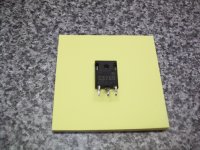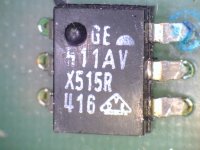sadmanonatrain
Well-known member
Good morning all,
I am currently working on the restoration of a Macintosh 128k. After replacing a 1.6A 250V fuse (which was not present when I opened the Mac up) on the analog board I switched on the Macintosh to be confronted with a cloud of smoke!
I have narrowed down the problem to two components; the second of which I cannot identify.
The analog board in question is an International one with a sticker marked '630-0122' and '240V'.
The board reference is 'Q10' and the component is marked 'C3260'. Above the '0' there is the number '48'.
I have attached a photograph below.

Any help in identifying and sourcing a replacement for this component will be much appreciated!
I am currently working on the restoration of a Macintosh 128k. After replacing a 1.6A 250V fuse (which was not present when I opened the Mac up) on the analog board I switched on the Macintosh to be confronted with a cloud of smoke!
I have narrowed down the problem to two components; the second of which I cannot identify.
The analog board in question is an International one with a sticker marked '630-0122' and '240V'.
The board reference is 'Q10' and the component is marked 'C3260'. Above the '0' there is the number '48'.
I have attached a photograph below.

Any help in identifying and sourcing a replacement for this component will be much appreciated!

